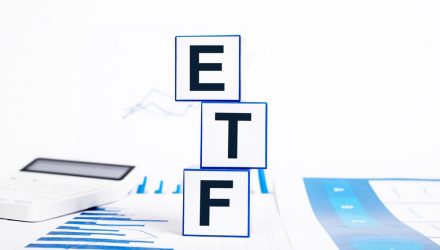More than eight months into 2022, it’s now widely known that fixed income funds – mutual, index, and exchange traded funds – are sagging. A year-to-date loss of 11.63% for the Bloomberg US Aggregate Bond Index confirms as much.
Obviously, a loss like that is nothing to scoff at and it could grow if the Federal Reserve accelerates its interest rate-hiking plans in a bid to dampen inflation. That’s possible as bond markets are pricing in shortening odds of an increase of 75 basis points later this month.
With those factors in mind, it’s reasonable that investors are skittish about allocating to bond funds, including ETFs. However, fixed-income ETFs maintain tangible benefits over their mutual fund rivals.
“With a median net expense ratio of just 0.29% versus 0.61% for fixed Income mutual funds, fixed income ETFs are, on average, 52% lower cost than their mutual fund counterparts. The median net expense ratio for an active fixed income ETF is also lower versus its active fixed income mutual fund peer, 0.40% vs 0.63%,” according to State Street Global Advisors (SSGA).
Then there’s the matter of capital gains, which are pesky year-end distributions many mutual fund investors deal with. Capital gains distributions lead to tax implications, which aren’t favorable for investors. Fortunately, ETFs mostly avoid capital gains.
“While both ETFs and mutual funds must distribute any capital gains to shareholders at the end of each year, decreasing their return on investment, ETFs generally distribute fewer capital gains. The improved tax profile for ETFs is a result of the tax efficient in-kind redemption process used to meet shareholder redemptions,” added SSGA.
SSGA notes that last year, 23% of bond ETFs distributed capital gains, but that percentage jumped to 42% for mutual fund equivalents. That’s likely one reason why fixed-income ETFs are likely to continue capturing inflows at the expense of mutual fund competitors.
“With elevated volatility in both equity and fixed income markets amid a restrictive Federal Reserve and persistent inflation, we expect strong flows into low-cost, tax-efficient ETFs to continue. As their benefits become more broadly explored and understood, fixed income ETFs will continue to increase in number and variety, creating greater application opportunities,” concluded SSGA.
For investors looking to blend bonds with the benefits of environmental, social, and governance (ESG) investing, the actively managed SPDR Nuveen Municipal Bond ESG ETF (MBNE) and the SPDR Bloomberg SASB Corporate Bond ESG Select ETF (RBND) are among the ideas to consider.
For more news, information, and strategy, visit the ESG Channel.
The opinions and forecasts expressed herein are solely those of Tom Lydon, and may not actually come to pass. Information on this site should not be used or construed as an offer to sell, a solicitation of an offer to buy, or a recommendation for any product.

